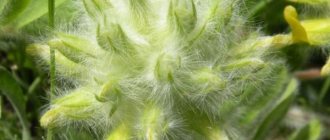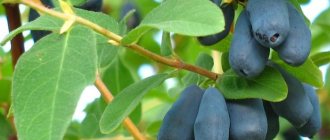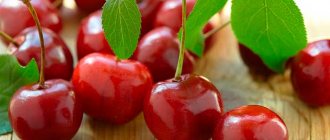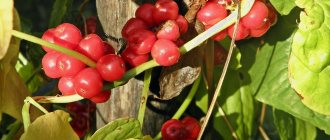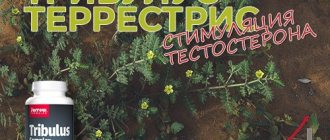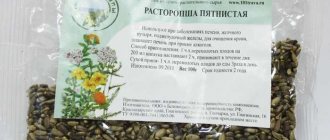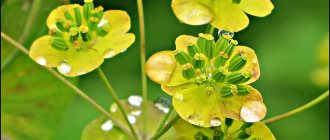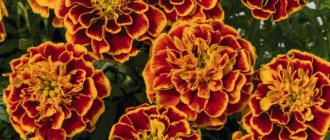Uses of bark
Velvet bark is used as an antipyretic and anti-inflammatory agent not only for diabetes, but also for a whole list of other diseases.
It is strongly recommended to pay attention to the fact that:
- it is an excellent remedy for fighting inflammatory lesions of the colon and dysentery;
- for exhaustion, pathologies of the pulmonary system, diseases of the pleura and an infectious form of hepatitis, an infusion of velvet bark is used. We should not forget about adding the foliage part of the presented plant;
- A decoction of the bark of the Amur berry is used by folk healers in Tibet. It is used in the treatment of pathologies such as lymphadenopathy, kidney disease, polyarthritis and allergic dermatitis;
- for ascites, the treatment of which is assessed as long-term, tincture of velvet bark is usually used.
Indications for use
A decoction of the bark and fruits of Amur velvet is used for pleurisy, pneumonia, pulmonary tuberculosis and diabetes. A decoction of bast and bark is used for dyspepsia, dysentery, acute inflammation of the colon, nephritis, polyarthritis, neurodermatitis, diseases of the lungs and lymph nodes, lepromatous and tuberculoid leprosy, neurasthenia, mental fatigue, eye diseases and skin diseases. Bast and velvet fruits help with diarrhea.
Infusions and tinctures of leaves and bark are recommended for diseases of the pleura and lungs, cholecystitis, infectious and chronic hepatitis, for exhaustion and to improve digestion.
A decoction of Amur velvet bast is used externally for conjunctivitis, eczema, scrofula, chronic ringworm, bruises and burns, as well as diseases of the oral mucosa. An ointment is prepared from the bark and phloem, which helps with ringworm, dermatitis and fractures.
The fruits of the tree, fresh or dried, are used for diabetes, ARVI and influenza, to reduce high blood pressure. The bark extract is used for cervical cancer. Bast is recommended for trichomoniasis, leishmaniasis and amoebic dysentery.
Spreading
The habitat of the Amur velvet is incredibly vast, stretching from East to West. This tree can be found in China, Korea, Japan, Taiwan, the Kuril Islands and Sakhalin, the Far East, the Amur region and the Khabarovsk Territory, and is also found as a cultivated plant in North America and throughout Europe. You can often see Amur velvet in the Caucasus and Central Asia. In Russia, Amur phellodendron predominates in valley deciduous forests with a variety of tree species, mostly broad-leaved; in addition, their favorite habitat is mountain slopes and hills located no higher than half a kilometer above sea level, where they grow in mixed coniferous and deciduous forests.
Plants of the genus Velvet are considered to be ancient relict representatives of the flora that existed before the Ice Age.
Preparation of tincture and decoction of Amur velvet
Leaf infusion
Use it to improve digestion
. To do this, 30 g of dry leaves are poured with 200 g of boiled water. This mass should be infused for two hours, after which it is filtered and squeezed well. Take the infusion 3 times a day, 3 teaspoons before meals.
Leaf tincture
This tincture improves the condition of cholecystitis and chronic hepatitis. To prepare it, you need to pour 30 g of dry leaves into a glass of 70% alcohol, then infuse for two weeks. Strain and take 15 drops every day.
Bark decoction
It is used as a choleretic agent. To prepare it, pour 10 g of dry bark with a glass of boiling water, put it on the fire and boil for about fifteen minutes. Then the broth is cooled and filtered
. It must be taken three times a day.
Thus, we have analyzed what Amur velvet is and what healing properties it has. Its fruits are considered especially useful and are used to treat many diseases. Do not forget that berries have contraindications and you should not take more than 5 of them per day. Otherwise, they can greatly harm the body.
Unique trees - powerful, slender and those with a spherical, low-set crown - are attractive to many. Therefore, more and more often you can meet those who are ready to grow Amur velvet on their plot (or near it). Are there any other names for this beautiful tree? Yes, it is the Amur cork tree, as well as phellodendron, the medicinal properties of which amazed our ancestors. But in order to grow healthy and powerful velvet, which can captivate with bright photos, you need to know the rules of planting, choosing a site and caring for it. Then the tree will live for more than 300 years in one place, and you will get an assistant who can cope with numerous ailments!
Description and application of Amur velvet
The tree is distinguished by an unusual crown, which from a distance looks like an openwork pattern, and dark velvet bark. In medicine, decoctions and infusions of leaves, flowers, fruits, bark and roots are used. With long-term use, it copes with various diseases, including severe ones.
Health benefits and harms of Amur velvet Amur velvet is famous for its medicinal properties due to its content of about 10 beneficial flavonoids, vitamins and tannins. In folk medicine, infusions and decoctions of medicinal trees are used in the fight against various diseases, namely:
- in the treatment of hypertension as an additional means to reduce blood pressure; - in the treatment of diabetes to quickly normalize blood sugar levels; - as an anti-inflammatory and antiseptic agent; - as an antipyretic in the treatment of flu or colds; - as a powerful hemostatic agent for external skin lesions and many other diseases, both internal and external.
Despite the many positive factors that have a beneficial effect on the human body, the cork plant can bring not only benefits, but also some harm to health
Therefore, it is necessary to take tinctures and consume fresh fruits with extreme caution.
Taking more than five berries at a time may cause allergies or poisoning. Also, taking drugs based on Amur velvet is contraindicated during pregnancy and young children. There are not many contraindications to the use of this medicine, however, they should not be neglected.
Use of Amur velvet fruits in folk medicine
In folk medicine, berries are more often used, which have the most pronounced medicinal properties with minimal contraindications. The fruits of the cork tree are considered an effective remedy in the treatment of various tumors, especially malignant ones.
In this case, the berries are accepted both fresh and dried. Due to the high content of essential oil, the fruits normalize impaired metabolism and improve weakened immunity.
The use of Amur velvet berries for the treatment of diabetes mellitus
Amur velvet is beneficial and does not harm the body only in case of type 2 diabetes. It is an adjunct that cannot replace injections and insulin tablets. At the same time, the medicinal properties of the Amur velvet berry for diabetes can significantly improve the results of traditional therapy and relieve many unpleasant symptoms.
Don’t know how to take Amur velvet correctly for diabetes?
- The fruits are eaten for six months without interruption, only then will improvements in the condition become noticeable.
- You cannot consume more than 5 berries of the plant per day; it is better to limit yourself to 3 or 4.
- It is better to chew it in the morning on an empty stomach, but there is no need to drink it down.
- For several hours after using the product, you should not drink coffee, alcohol, tea or smoke cigarettes.
By following all these rules, you can achieve a sustainable reduction in blood glucose levels. However, doctors recommend regularly measuring your glycemic levels to understand how the plant affects your body!
In the FitoContinent online store you can find the most current, high-quality and rare medicines that are used in folk medicine. Just call the number listed on the website or place an order in the catalog.
Review
Oleg Evgenievich Kuznetsov, 56 years old
My wife learned about the healing properties of Amur velvet berries and immediately rushed to order them in your store - she always buys some herbs here for her medicinal teas. The fact is that I have been suffering from type 2 diabetes for 15 years, and there is a high risk that I will have to inject insulin. We tried a lot of things, I’m already tired of drinking her decoctions. But here it seems like you should eat a few berries, nothing so complicated is required. True, they warned that you need to eat for several months so that the sugar drops and measure it constantly to control the effect. But even without measurements, I realized after a couple of months that I began to feel better. And six months later, the sugar actually dropped and remained at the upper level of normal. I will now use this constantly, as long as there is enough stock in the store)))
Benefits of the plant
Speaking about why the use of Amur berries for the treatment of type 2 diabetes will be effective, it is necessary to pay attention to the presence of various vitamin components and other substances in it. In particular, the composition of Amur velvet boasts the presence of essential oils and tanning components, as well as vitamins P and C, flavonoids
All of them, in moderation, will be beneficial for every diabetic.
In addition, the presented berries for diabetes, which are undesirable to use in type 1 of the disease, are characterized not only by a tonic effect, but also by a general strengthening effect. Provided that all application standards are followed, Amur velvet is likely to achieve a hemostatic and even analgesic effect, which is no less important in the presence of diabetes. That is why, in case of type 2 diabetes, it is strongly recommended to remember the need to consume the presented berries and its benefits for a weakened body.
Amur velvet description where it grows
Amur velvet or cork tree is a beautiful deciduous tree of the Rutaceae family of the Velvet genus with a spreading openwork crown. In adulthood, the plant can reach a height of up to 25-28 meters, and the trunk is up to one meter in diameter.
The leaves of the tree are odd-pinnate and lanceolate in shape. The top ones are similar in shape to ash leaves. When rubbed in your hands, they release an unusual and not very pleasant aroma. The leaves bloom in late May or early June.
Amur velvet is a dioecious plant with small, inconspicuous flowers, collected in inflorescences with greenish petals, which bloom in late June. Pollination occurs by insects.
At the end of summer or early autumn, the seeds ripen - round, small black berries with a slight tint, similar to black pearls. After ripening, the berries quickly fall off. Some can remain in clusters until winter. They taste bitter with a resinous odor.
The tree trunk is covered with soft gray bark, similar to cork. In fact, it was because of her that it got its name. In young plants it may have a silvery tint.
This beautiful tree is a relict tree that has survived to this day, having survived the global glaciation.
It prefers fertile, moist soils. It is very resistant to drought due to its powerful root system that penetrates deep into the ground and is not afraid of winds. Therefore, it can easily endure harsh winters. The tree is long-lived. Can grow up to 250 years.
Here it grows in the Khabarovsk Territory and the Far East, in the Kuril Islands, Sakhalin, in the Amur and Primorye regions.
It also grows in Korea, China, and on the island of Taiwan. Found in Japan. As an ornamental plant, it decorates many parks all over the world.
Use in folk medicine
Velvet bark decoction against oncology, mycoses, against parasites
To prepare a decoction of Amur velvet bark, take 10 grams of dry bark, add a glass of boiled water and boil over low heat for about 15 minutes. Then cool, strain and squeeze the remainder into a decoction. The prepared decoction should be drunk in three doses during the day.
Infusion of leaves for appetite
An infusion of leaves is used to improve digestion. You need to take 30 grams of dried crushed leaves and pour one glass of hot water, leave for a couple of hours, strain. Take a tablespoon three times a day before meals. Store in a cool place in a sealed container.
Alcohol tincture of velvet leaves for chronic cholecystitis and hepatitis
An alcohol tincture is made like this: 30 grams of crushed dry leaves are poured with a glass of alcohol and left for two weeks in a dark place. Strain thoroughly and take 12-15 drops before meals three times a day.
Velvet fruits for diabetes
You should consume the fruits of this tree every day - 3-4 pieces on an empty stomach. They must be carefully bitten and chewed, you can simply hold them in your mouth, you cannot drink them with water or eat them for 6 hours. Taking it for six months can reduce blood sugar levels to normal. If the patient’s disease began a long time ago, then one such course of using the fruits of Amur velvet will not be enough.
Velvet fruits for the prevention and treatment of hypertension
Eating fruits will also help with high blood pressure. You should eat 1-2 fruits every day before meals.
Velvet fruits for the prevention and treatment of influenza
For flu and colds, use the fruits of this tree before bed. You need to thoroughly chew 1-2 fruits, hold them in your mouth for a while, and then do not drink water or eat. If the disease is just beginning, then one application will be enough.
Fruits for the treatment of pancreas
Eating Amur velvet fruits normalizes metabolism in the body and the functioning of the pancreas - eat 3-4 during the day. The course is no more than a week.
Velvet bark after operations
To heal surgical wounds, velvet bark is used instead of rivanol. To prepare this medicine, 100 grams of bark are infused in half a liter of water for two days. After two days, boil the infusion for 30 minutes, add 15 grams of boric acid and 5 grams of novocaine. Boil for 10 minutes. Cool, strain, squeeze out the remainder into an infusion and moisten clean, sterile gauze. This gauze should be applied to the wound.
Velvet flower honey against tuberculosis
Velvet honey is aromatic and has excellent taste properties. Contains a lot of glucose, so it does not crystallize for a long time. Consuming this honey is effective in treating tuberculosis.
Beneficial features
Amur velvet berries lower blood glucose levels, stabilize the pancreas, and accelerate metabolic processes.
Taking the fruits during the treatment of respiratory viral diseases will speed up recovery, relieve unpleasant symptoms, reduce cough and sore throat, and reduce high fever.
The berries, which have an astringent and anti-inflammatory effect, will quickly heal wounds on the mucous membrane and cure various diseases of the oral cavity.
Regular use of Amur velvet will help normalize blood pressure, stop putrefactive processes, and kill pathogenic microbes.
Healing berries will cleanse the body of parasites (worms, roundworms, pinworms, etc.), increase male potency, and strengthen the immune system. In addition, the fruits of Amur velvet have antitumor properties and prevent the development of cancer, the appearance of hematomas, sarcomas, etc.
Medicinal properties and chemical composition of Amur velvet in the service of health
The fruits of the magic tree are truly miraculous: they increase vitality, give physical strength, and help strengthen the immune system. And for this all you need is to eat 2-3 berries in the morning on an empty stomach. You can drink the berries with water and make sure that you don’t eat more than 5 berries at one time! But this is not all that a tree is capable of! Its rich chemical composition allows you to fight numerous ailments, as well as use leaves, bast or berries to prevent certain diseases.
Amur velvet fruits
And all this is possible thanks to the content:
- vitamins of group PP, C;
- essential oils and coumarin;
- tannins - 15%;
- saponins and alkaloids;
- polysaccharides and carbohydrates;
- starch;
- phytosteroids.
Medicinal properties of Amur velvet
The fruits of Amur velvet are most effective for colds, flu, sore throat and ARVI, for metabolic disorders, and are also indicated for people who want to lose weight. A long-lasting therapeutic effect was noticeable in those who suffer from high blood pressure: after 21 days of taking the berries, the pressure stabilized and remained that way for 6-10 months. However, phellodendron can also cope with:
- diabetes mellitus;
- gastrointestinal ailments;
- diseases of the kidneys and genitourinary system;
- tuberculosis, bronchitis and some types of asthma;
- allergies with skin rashes, dermatitis.
Amur velvet bark
Do not forget that to improve health, they use not only the fruits, but also the leaves from which the decoction is made, as well as phloem and bark. Tinctures and ointments have a diuretic, wound-healing, and anti-inflammatory effect on the body.
A striking feature is Amur velvet honey. Since the tree blooms profusely and has large quantities of pollen and nectar, it attracts bees. Working bees, who then delight many with dark yellow honey with a subtle green tint. The pleasant smell and taste, low glucose content, long shelf life and absence of crystals make the honey of this tree not only a rare delicacy, but also an excellent remedy in the fight against tuberculosis.
Phellodendron: contraindications for use
But despite the fact that Amur velvet helps many, it, like any other medicinal plant, has a number of contraindications. They are classic, but nevertheless worthy of attention. So, decoctions, tinctures, ointments, rubbing and ingestion of fresh berries are not recommended:
- children under 12 years old;
- pregnant women, people prone to allergies and/or having an increased reaction to components and substances;
- smoking.
It is also worth mentioning that alcoholic beverages are strictly prohibited while taking the medication. All without exception in order to achieve optimal results for a long time.
Amur velvet - a medicinal plant
What you need to know before using Amur velvet for treatment
Amur velvet is a unique tree that has medicinal properties and is used for many diseases. However, in some cases it is better to refuse treatment with velvet tree components. Contraindications are:
- children up to 14 years old,
- pregnancy,
- abuse of cigarettes, alcohol, coffee and tea,
- hypersensitivity to components.
It is also necessary to take into account that Amur velvet fruits are not recommended to be consumed fresh in quantities of more than 5 pieces. in a day. Exceeding the specified norm can lead to serious poisoning.
If there are no contraindications to treatment, you should consult your doctor before starting the course.
Description of wood and properties of velvet
Velvet grows in fertile and moist soil. Since the tree's root system is deep, it easily tolerates drought, wind and inclement weather. The plant reproduces by seeds, which sprout when planted quickly. Cupid fruits and berries contain medicinal properties that are used today to treat diseases.
In good conditions, velvet can grow for up to 300 years, producing flowers and fruit every year
Important: the leaves of the plant contain many flavonoids, tannins, vitamins and essential oils. In addition, their composition is endowed with phytoncides that have an anti-putrefactive, antimicrobial and anthelmintic spectrum.
Cupid flowers are small, with green leaves. To treat the disease, they are collected in inflorescences. Velvet fruit is a shiny black ball, the use of which has many benefits for the human body and systems. The tree blooms in the first months of summer, however, the fruits fully ripen only towards the end of autumn.
Important: velvet is not afraid of transplants, so once you find a small shoot, the tree can be transplanted. Cupid fruits are now called “black pearls”, as they are very similar to them
Each fruit grows in a cluster, so it is quite difficult to confuse them with others
Cupid fruits are today called “black pearls”, as they are very similar to them. Each fruit grows in a cluster, so it is quite difficult to confuse them with others.
Amur velvet description
Amur velvet or cork tree grows up to 28 meters, the trunk in girth can reach up to a meter. Prefers sunlight and humidity, fertile or loamy soils, easily tolerates drought, thanks to its powerful roots. From a long-lived breed, it grows up to 300 years. It blooms in July, the clusters are inconspicuous and paniculate.
Characteristics:
- Flowers, leaves and bark have a sharp, specific smell.
- The ovary occurs after pollination by bees; one tree produces up to 19 kg of fruit per year.
- The leaves are lanceolate, similar in appearance to ash, and bloom in early June.
What does Amur velvet look like?
Amur velvet is an ancient and very valuable plant; the wood has long been valued for its strength and beautiful pattern. Bark has always been in favor; cork material was readily purchased for construction needs. But it is also used in treatment. Its color is lightish gray, with young trees having a light, silvery tint.
Scientists call Amur velvet phellodendron, noting the following features:
- The thickness of the bark of older trees is up to 7 cm, and that of young trees is about 2 cm.
- In single plants, the branches are located almost horizontally, forming a tent-like crown.
- The leaves are held on the central petioles, bloom late - in early June, but their leaf fall is early - until October.
Where does Amur velvet grow?
By studying where the cork tree grows, researchers became acquainted with different places on the globe. It is found in Primorye, the Amur region, the Kuril Islands, Japan, China, Sakhalin, and the island of Taiwan. As an ornamental plant, it has taken root in parks in different parts of the world and can easily withstand both heat and harsh winters and strong winds.
What he prefers:
- Deciduous forests, plains with fertile and moist soils.
- In the mountains - at least 700 meters above the ocean.
Amur velvet fruits: beneficial berries against hypertension and diabetes
Natural berries of Amur velvet are recommended for use for the following diseases:
- diabetes;
- ARVI, influenza;
- sore throat, sore throat;
- cough syndrome;
- dysentery;
- gastrointestinal diseases;
- impotence;
- inflammation of the oral cavity;
- headache;
- hypertensive syndrome;
- helminthic infestations;
- oncology.
Amur velvet is a perennial fruit-bearing tree with a dense crown, growing up to 28 meters in length. Almost all parts of the plant (leaves, flowers, bark, etc.) have healing properties. The fruits of Amur velvet, which ripen in late autumn, also have a pronounced therapeutic effect.
Large black shiny berries, resembling pearls, have a bitter taste and rich tart aroma and are often used in traditional medicine recipes. Regular use of the fruits will help get rid of a number of serious diseases and improve the general condition of the body.
Caring for plants on site
Amur velvet is common in the Amur region and the Far East. It was here that they learned to properly care for the plant and plant it in permanent places of growth. Despite the fact that the crop does not require specific care, in dry times it continues to require at least minimal watering. Velvet prefers sunny areas. In summer, many inflorescences form on it.
Amur velvet can be planted with seeds in the ground or with young cuttings. The emerging seedlings quickly adapt to the place of growth and calmly transfer to a new location. Grown trees develop quickly, growing their root system deep into the soil and adapting to environmental conditions.
This is all you need to know about the healing properties of Amur velvet and its fruits. When treating with this plant, the main thing is not to violate the established dosage and always follow clear instructions. This is the only way to achieve a good therapeutic effect, as well as get rid of the troubling problem.
Amur velvet is a beautiful relict tree, common in our Far East and in the surrounding areas. The berries, leaves, and bark of this tree have long been used in folk medicine, not only in our country, but in Korean and Chinese traditional medicine. Preparations based on it have many useful and medicinal properties. With their help, you can normalize blood sugar levels, lower blood pressure and solve some other health problems. How to use it, what medicinal properties and contraindications this tree has will be discussed in this article.
A truly beautiful tree description of phellodendron
Today, phellodendron is widespread throughout China, Korea, Japan, and the Amur region (RF). Even in ancient times, the Chinese knew about the miraculous power of the tree, valued and respected it, using all parts (except for the roots) to prepare rubs, tinctures, ointments and decoctions as medicine, and the bark for products.
At that time it was called a black pearl: the fruits of phellodendron are blue-black berries collected in a cluster like grapes, the diameter of each berry is 1 cm. The flowers are inconspicuous, green, and have no healing qualities.
Amur velvet is a deciduous tree. Its trunk is 100-120 cm in girth, height - 20-25 m. A tree grown outside the forest is lonely and has a tent-like crown, but one grown in a complex planting has a highly raised crown. The bark is ashy, silvery, darkens after cutting off the cork layer (the first time - at the age of 10).
Medicinal properties of the plant
Amur velvet is highly valued for its medicinal properties. It is used very little in traditional medicine, but in folk medicine, in particular in China and Tibet, almost all parts of the velvet tree are widely used:
- fruit;
- bark;
- bast;
- leaves;
- roots.
They contain flavonoids, tannins, vitamins, essential oils and phytoncides. The description of the healing properties of velvet includes a very large list of diseases. Products, ointments and tinctures from this plant have a number of useful properties:
- anti-inflammatory;
- antiseptic;
- wound healing;
- diuretic;
- antimicrobial and anthelmintic;
- antitumor.
Medicinal properties of fruits
The fruits of Amur velvet are most often used in folk medicine, the medicinal properties of which are most powerfully expressed.
Berries for medicinal purposes are harvested after they are fully ripe. They are accepted both dried and fresh. They are effective in treating a number of diseases, for example, diabetes, cystitis, reduced immunity, etc.
The fruits effectively lower blood sugar levels. For diabetes, it is recommended to take berries on an empty stomach in the morning, chewing, but not drinking. After six months of regular use, the sugar level is restored. In addition, metabolism is normalized and the functioning of the pancreas is improved. This result is achieved thanks to the essential oils contained in the fruits.
Essential oils of Amur velvet are excellent for colds and flu - in this case, you need to chew and hold 1-2 berries in your mouth, no more, and then do not drink or eat for at least six hours. Usually one appointment is enough to get rid of the disease; in rare cases, a second appointment is needed.
Another valuable property of velvet fruits is lowering blood pressure; for this purpose, they are consumed before meals every day.
Tinctures and decoctions of Amur velvet berries are useful for tuberculosis, pleurisy, and pneumonia. They have antipyretic and anti-inflammatory properties. This is an effective remedy for diseases of the oral cavity, dysentery, nephritis, and gastrointestinal diseases.
Berries contain a number of substances that are dangerous to the body in large quantities.
Therefore, when taking fruits and preparations based on them, you should be careful: do not take more than 5 berries daily, do not use for pregnant women, children under 12 years of age and people prone to allergic reactions. It is also prohibited to take alcohol, strong tea, coffee or smoke during treatment.
Medicinal uses of other parts of the tree
Other parts of this plant are also used in folk medicine. The bark has been observed to be an active anti-inflammatory and antipyretic agent for a variety of diseases. A decoction of velvet bark is useful for diseases of the lungs and kidneys, infectious hepatitis, polyarthritis, dysentery, especially if fresh leaves of the tree are added to it. The bark is often used as an analgesic and wound-healing agent for wounds that do not heal for a long time - for this, the bark is boiled in water, novocaine and boric acid are added.
A decoction of the bark is effective for skin diseases, allergies and dermatitis.
In Chinese medicine, bast is used in the treatment of nervous system disorders and mental fatigue; in addition, it perfectly removes helminths from the body and is useful for sore throats. Decoctions of leaves and bast are used as a tonic, it improves appetite and digestion.
The roots are used to treat various types of tumors. Velvet generally has a pronounced antitumor effect, even in late stages. It prevents the formation of sarcomas and tumors, so in some medical institutions it is planted not only as an ornamental, but also as a preventive plant.
The healing effect of cupid velvet is very noticeable and lasting, especially noticeable when taken regularly in “homeopathic” doses.
Velvet raw material collection
It is necessary to prepare raw materials for medicinal purposes within a certain time frame:
- leaves - in mid-summer on a dry, clear day;
- bark - in spring;
- berries - after full ripening.
The raw materials are dried in the shade in a ventilated room or under a canopy; before drying, it is advisable to dry the fruits a little outside. The shelf life of harvested raw materials is one year.
https://youtube.com/watch?v=ZE0usHmBsIU
Amur velvet: berries and their uses
Philodendron can bear fruit only once every 5-7 years. Therefore, its berries can not be found as often as we would like. The fruits are spherical in shape and resemble pearls. Their color is black, their smell is resinous, specific, and their taste is bitter.
Amur velvet berries are used only for medicinal purposes. Reviews from those who have tried the product on themselves confirm the strong effect. This is due to the fact that the fruit contains many useful substances: myrcene, geraniol, limonin, berberine, tannins, palmatine and diosmin.
The most valued berries are those that hang on the tree longer, in some cases until the first frost. One carp tree can produce up to 10 kilograms of berries. They are dried in the open air and then used for medicinal purposes. Below we will talk about this in more detail.
Healing properties and composition of velvet
Velvet is a beneficial tree that can cure many diseases. To understand how cupid works, you should familiarize yourself with the properties of velvet:
- Flowers, leaves and fruits contain flavonoids, berberine and jatrorrhicin.
- Each leaf of the plant contains vitamins, tannins and essential oils that benefit the body.
- The chemical composition of the leaves is endowed with microelements and vitamins C and P.
- Velvet bast contains coumarins, sterols, acids and saponites.
- Velvet fruits are endowed with 10% limonene, palmitine, diosmin and geraniol (these components are rarely found in tree fruits).
In folk medicine, velvet berries are used in the form of decoctions and tinctures. In addition, grass carp leaves and bark are also used. For skin diseases, decoctions are used; for diabetes, pneumonia and pleurisy, infusions are used.
Important: products based on cupid components are endowed with anti-inflammatory, deodorizing, antipyretic and astringent effects, so this tree can treat many diseases and disorders of the body
Medicinal properties of Amur velvet
The medicinal properties of this tree have long been used in folk medicine. Flowers, leaves and bark are used to make tinctures and decoctions, which have a deodorizing, astringent, antipyretic and anti-inflammatory effect.
For example, a decoction of fruits and bark helps with pulmonary tuberculosis, diabetes, pleurisy and pneumonia. Various skin diseases are also cured.
Tincture of Amur velvet fruits has been successfully used to treat:
For jade and leprosy, a decoction of the bark of a young tree is very useful.
Many experiments were carried out, the results of which revealed that preparations from Amur velvet have a fungicidal effect, lower blood pressure, and also increase resistance to various tumors.
